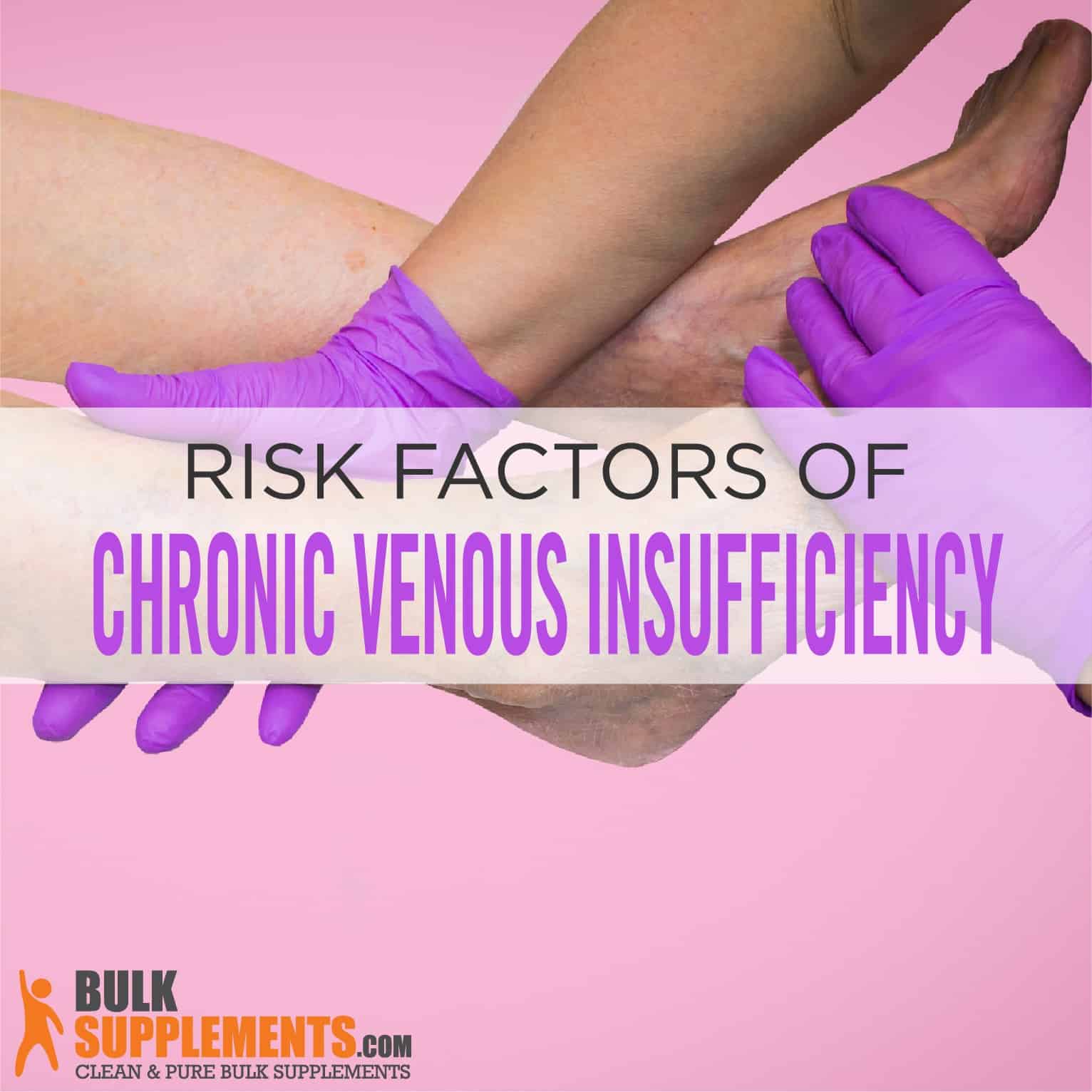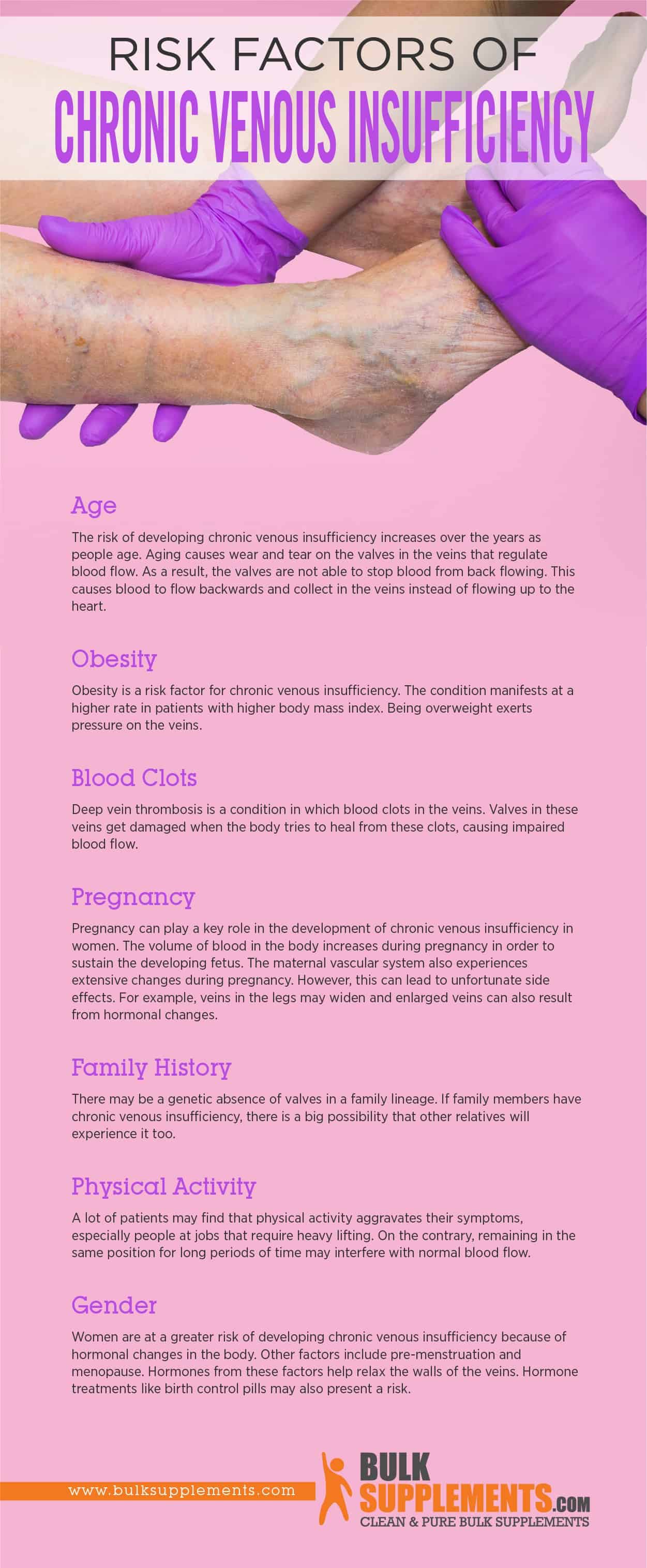Chronic Venous Insufficiency: Causes, Symptoms & Treatment
by James Denlinger Digital Marketing Strategist
What is Chronic Venous Insufficiency?
The arteries are responsible for transporting blood from the heart to the rest of the body. Veins transport blood back to the heart, while valves in the veins prevent blood from flowing backward. If an individual suffers from chronic venous insufficiency (CVI), these valves do not function properly, causing blood to pool in the legs and exerting pressure on the veins. Blood fights gravity to flow through veins, but it must fight even harder in the legs and feet. This pressure causes the veins to stretch, weakening the internal valves in the veins. They allow blood to flow through and then close to prevent it from flowing back. Chronic venous insufficiency affects 40 percent of people in the United States, according to the Society of Vascular Surgery. The condition most commonly affects individuals over 50 and it is more common in women than men.
Causes and risk factors of chronic venous insufficiency include pregnancy, family history and obesity. It can also result from high blood pressure in the leg veins. Sitting or standing over long periods of time can increase pressure in the legs. Chronic venous insufficiency can cause leg pain, swelling in the lower leg or ankle and skin changes in the legs. It can also cause varicose veins, which develop from excess pressure on the legs.
Some remedies for chronic venous insufficiency include regular exercise, maintaining a healthy weight, maintaining skin health and wearing compression garments. All of these behaviors can help enhance blood flow. Supplements like horse chestnut and bilberry may also help with blood circulation.
Symptoms of Chronic Venous Insufficiency
The symptoms of chronic venous insufficiency become more severe as the condition progresses. They may be similar to other conditions. Patients should seek medical attention as soon as they notice any signs of CVI. Early diagnosis and prompt treatment helps reduce the risk of any serious complications.
Patients with this condition often experience a combination of symptoms including leg pain and swelling in the legs or feet. Damaged capillary membranes also cause leg edema. CVI also causes varicose veins, which develop from swelling on the back of the legs and increased venous pressure. Patients may also notice an open sore on the inside of the leg called an ulcer. Usually they appear on the skin just above the ankle. The calves usually feel stiff and the legs cramp. Patients also often complain of discomfort in the legs, with limbs feeling very heavy.
Lipodermatosclerosis
In addition, the skin itself also changes in color and texture. The skin may darken on the affected limb. As the blood pools, pigment builds up under the skin, permanently darkening it. The skin may also thicken and turn leathery. This condition is called lipodermatosclerosis. It is a type of panniculitis, inflammation of the skin’s fat layer that results in skin ulceration.
Researchers have not identified the specific cause of lipodermatosclerosis, but it is common in patients with chronic venous insufficiency or certain vein disorders. Most cases occur in obese individuals. Physicians use compression therapy to treat it and eliminate chronic venous insufficiency. Medications that prevent blood clotting, inflammation and pain can help some patients. If the condition fails to respond to initial treatments, the patient may need surgery.
Risk Factors for Chronic Venous Insufficiency
Age
The risk of developing chronic venous insufficiency increases over the years as people age. Aging causes wear and tear on the valves in the veins that regulate blood flow. As a result, the valves are not able to stop blood from back flowing. This causes blood to flow backwards and collect in the veins instead of flowing up to the heart.
Obesity
Obesity is a risk factor for chronic venous insufficiency. The condition manifests at a higher rate in patients with higher body mass index. Being overweight exerts pressure on the veins.
Blood Clots
Deep vein thrombosis is a condition in which blood clots in the veins. Valves in these veins get damaged when the body tries to heal from these clots, causing impaired blood flow.
Pregnancy
Pregnancy can play a key role in the development of chronic venous insufficiency in women. The volume of blood in the body increases during pregnancy in order to sustain the developing fetus. The maternal vascular system also experiences extensive changes during pregnancy. However, this can lead to unfortunate side effects. For example, veins in the legs may widen and enlarged veins can also result from hormonal changes.
Family History
There may be a genetic absence of valves in a family lineage. If family members have chronic venous insufficiency, there is a greater possibility that other relatives will experience it too.
Physical Activity
A lot of patients may find that physical activity aggravates their symptoms, especially people at jobs that require heavy lifting. On the contrary, remaining in the same position for long periods of time may interfere with normal blood flow.
Gender
Women are at a greater risk of developing chronic venous insufficiency because of hormonal changes in the body. Other factors include pre-menstruation and menopause. Hormones from these factors help relax the walls of the veins. Hormone treatments like birth control pills may also present a risk.

Diagnosing Chronic Venous Insufficiency
Chronic venous insufficiency is diagnosed with a physical examination. A physician performs a physical exam and reviews the patient’s medical history to establish the severity of the condition. Diagnostic procedures include:
Duplex Ultrasound
This method uses high-frequency sound waves to monitor the speed at which blood flows through the veins. The physician places gel on the legs and presses a transducer against the area, which transmits sound waves that produce an image on a computer. The ultrasound helps the physician outline an effective treatment plan. It also helps them study the structure of veins in the legs and also detect any blood clots or reflux.
Venogram
A venogram is a method of diagnosing chronic venous insufficiency that utilizes contrast dye to visualize the blood vessels in an X-ray. The contrast dye causes the veins to appear opaque on the X-ray image. This gives physicians a good view of the blood vessels and allows them to assess the size and condition of the veins. A venogram test is also very accurate at diagnosing deep vein thrombosis. Additional examinations to diagnose venous insufficiency may include CT scans, MRI scans and blood tests.
Treatment for Chronic Venous Insufficiency
Surgical Treatments
If a patient’s condition does not respond to other medications or therapies, they may require surgery. It is usually a last resort because the surgical options are invasive. The surgeon may remove the damaged vein or surgically repair it. Some other applicable surgical procedures include a deep vein bypass or endovenous laser treatment. Doctors will use a vein bypass in severe cases, to transplant a healthy vein to replace a damaged one. In laser treatment, the surgeon inserts a catheter into the leg to reach the damaged vein and then inserts a laser fiber. The laser heats the vein, shrinking and collapsing it. Then the body is able to redirect the blood into other veins after it absorbs the damaged shrunken vein.
Nonsurgical Treatments
Sclerotherapy
This treatment introduces a solution directly into the damaged vein using a needle, making it collapse so the body can absorb it. This procedure requires multiple sessions, but it helps eliminate pain and prevent possible complications.
Endovenous Thermal Ablation
This is the most common treatment, using a laser or high-frequency radio waves to generate extreme heat in the affected vein. This closes off the damaged vein, but it still remains in place so there is less bruising and bleeding. Endovenous thermal ablation is less painful compared to other forms of treatment.
Lifestyle Changes
After treatment—surgical or nonsurgical—a doctor may recommend several lifestyle factors that may stop the symptoms from returning. For example, patients should exercise to stimulate the leg muscles and enhance blood circulation. Stretching, walking, riding a stationary bike or jogging are all good ways to tone the leg muscles and stimulate blood flow to the heart. Similarly, patients may want to avoid sitting or standing in one position for too long. Move around as often as possible to stimulate blood circulation.
Since obesity is a risk factor for chronic venous insufficiency, it’s also important to maintain a healthy body weight. Healthy eating and activity habits can help with weight loss that may take excess pressure off of the veins.
A doctor may also prescribe compression garments to help treat chronic venous insufficiency and prevent recurring symptoms. Compression socks or stockings have flexible fabric that put pressure on different parts of the leg to help blood flow properly.
It is also a good idea to keep the skin moisturized and healthy. Moisturize the legs to make sure the skin doesn’t become dry or flaky. Use topical ointments and exfoliate to get rid of dead skin.
Supplements for Chronic Venous Insufficiency
Horse Chestnut
Native to the Balkan Peninsula in southeast Europe, horse chestnut may be useful in treating chronic venous insufficiency. According to studies, it helps contract major veins in the legs to promote healthy circulation and improve blood pressure flow. Research suggests that it may be an effective short-term treatment. As a dietary supplement, take 300 mg of horse chestnut powder extract twice a day. Consult a doctor before using this supplement.
Hesperidin
Hesperidin is a bioflavonoid extracted from citrus fruits, mostly lemons and oranges. It helps blood vessels function properly by supporting their thin walls. According to studies, bioflavonoids may effectively help treat disorders that cause blood clots. Studies suggest that hesperidin may also improve chronic venous insufficiency specifically. As a dietary supplement, take 500 mg (about ¼ tsp) of hesperidin powder one to two times daily with food and water after consulting a physician.
Bilberry
Related to the blueberry and cranberry, bilberries are a natural remedy dating back to the Middle Ages. Bilberry contains chemical called anthocyanins. Studies suggest that it may help reduce CVI symptoms and improve pain, swelling and bruising. As a dietary supplement, take 400 mg (about ¼ tsp) of bilberry extract powder once or twice a day with food, or following a physician’s directions.
The Bottom Line
Chronic venous insufficiency is a condition in which the blood does not flow properly through the veins in the legs and feet back to the heart. It occurs in defective valves, causing blood to flow back into the vein. Its symptoms include swelling, varicose veins and pain in the legs. It can also cause a condition called lipodermatosclerosis, in which the skin changes texture or color. The blood pooling under the skin can cause it to darken and the skin may become dry. There are surgical and nonsurgical treatment options. A patient usually usually only requires surgery if other forms of treatment fail. Lifestyle changes like exercise and weight loss can also prevent symptoms from returning after treatment. Supplements are also another option to help promote healthy blood circulation in the body. However, they are not designed to be a medical treatment. Instead, supplements are intended to promote general health.
Sponsor Ads
Created on Mar 5th 2020 17:34. Viewed 302 times.



